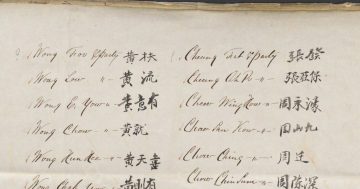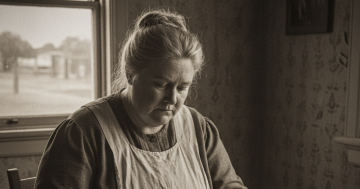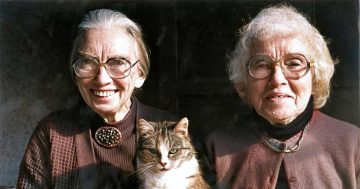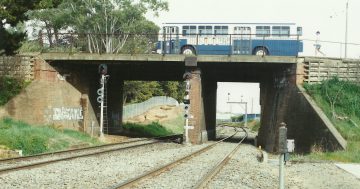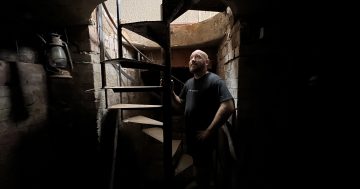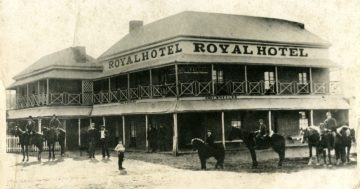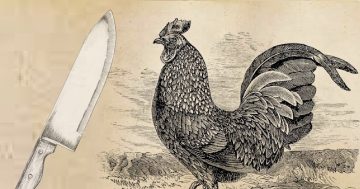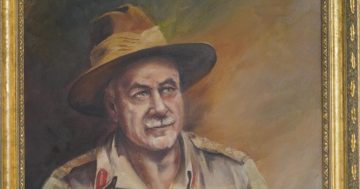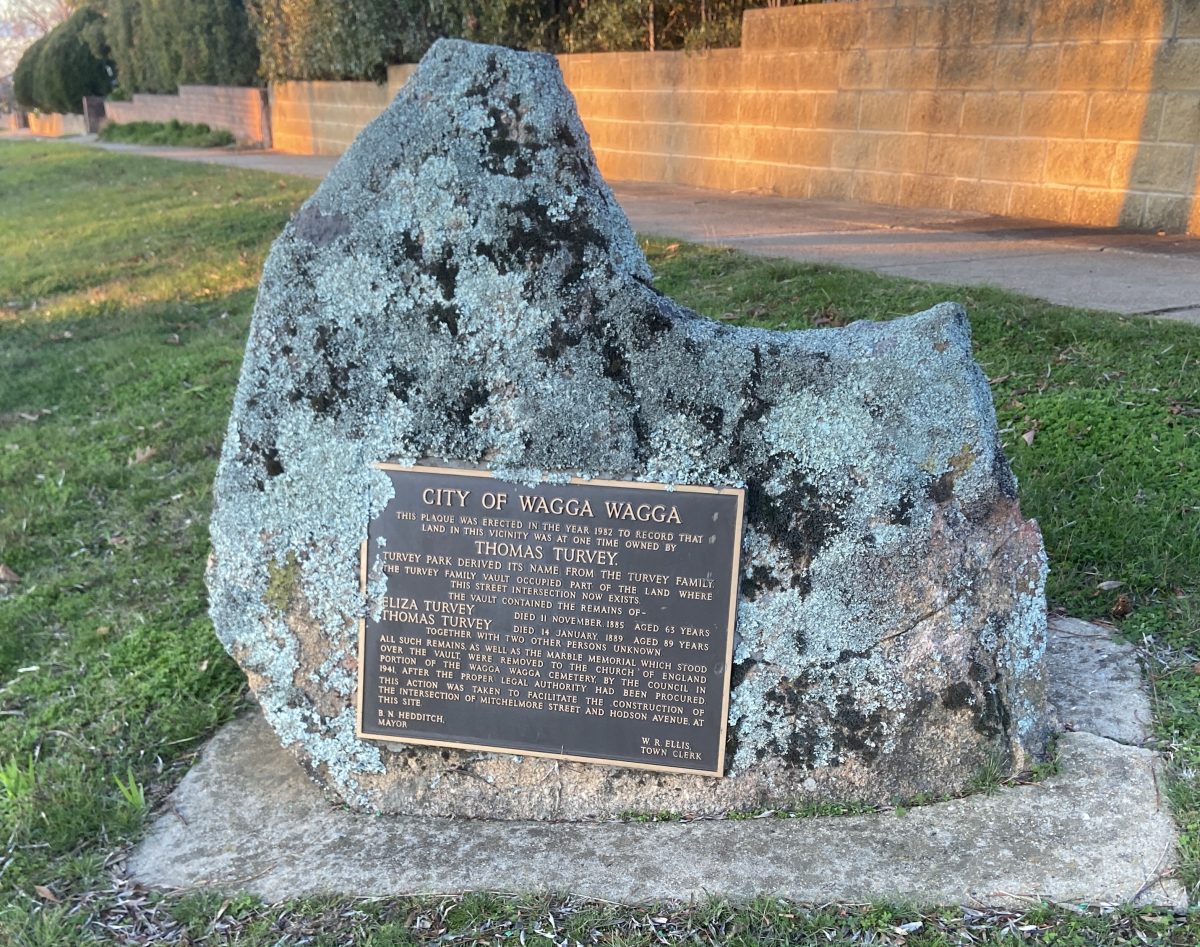
The former location of the Turvey family’s vault on the corner of Mitchelmore Street and Hodson Avenue in Wagga Wagga. Photo: Chris Roe.
If you drive or stroll through the Wagga suburb of Turvey Park you will see, at the intersection of Mitchelmore Street and Hodson Avenue, a large lichen-covered boulder displaying a plaque declaring that the land was once owned by Thomas Turvey.
The stone is a reminder of how the suburb got its name and also marks the site of the Turvey family’s vault that was once the subject of wild speculation and rumours of hidden treasure.
The burial vault was a domed brick and concrete structure seven metres wide and 10 metres deep in which the bodies of Mr and Mrs Turvey and two unidentified children were interred.
When the vault was demolished in 1941 for road widening works, the coffins and skeletons were found well preserved and were relocated along with the headstone to the Wagga Monumental Cemetery, however, the tomb itself had clearly been ransacked.
According to local legend, Thomas Turvey had hidden a fortune somewhere on his property and it seems some suspected the location was the crypt.
By the time of his death in 1889, Thomas Turvey had become a major property owner and business leader in Wagga where he had been a formidable presence for almost 40 years.
Turvey’s origins were humble, or more accurately, criminal. He was one of four brothers transported for life to Australia from England for sheep theft in the 1830s.
As a convict labourer in Bathurst in 1842, the 39-year-old was granted a conditional pardon and married 17-year-old free immigrant Elizabeth (Eliza) Redmond.
Approval for their marriage was at first not granted and there is evidence to suggest Turvey already had a wife and family back in England. Bigamous or not, the marriage was eventually approved and the Turveys moved to Wagga in the late 1850s.
It is unclear whether they had children, however, Eliza did conceive a son in 1858 as the result of a liaison with the proprietor of the Criterion Hotel, John Clark (real name Milner).
Milner was a military deserter, former circus performer and closer to her in age than her husband and the affair seems to have been an open secret in Wagga.
Their child, John Turvey Clark, (that middle name is a bit of a giveaway) was registered as the offspring of John Clark and ‘Mary Coswell’ and the birth certificate states that ‘Mary’ had two living daughters.
Were they fictitious? Do they refer to unrecorded children she shared with Clark or Turvey?
Thomas Turvey was said to be grief-stricken over the death of a daughter who was the first interment in the vault, but no record of her birth or death has been found.
The young John Turvey Clark was prone to fits and died in 1873, aged only 14, after falling into a sawpit and drowning in 14 inches of water. Was he the second burial in the vault?
In 1883, Eliza was charged by the police with using obscene language within earshot of the public, but restricted mobility made her unable to appear before the magistrate.
Two years later, her mobility had deteriorated further, and on 11 November 1885, when her garments caught alight from an open fire, she could not act swiftly enough to extinguish them and died from her burns and shock later that day. Shortly afterwards she became the only occupant of the Turvey vault to be commemorated in stone.
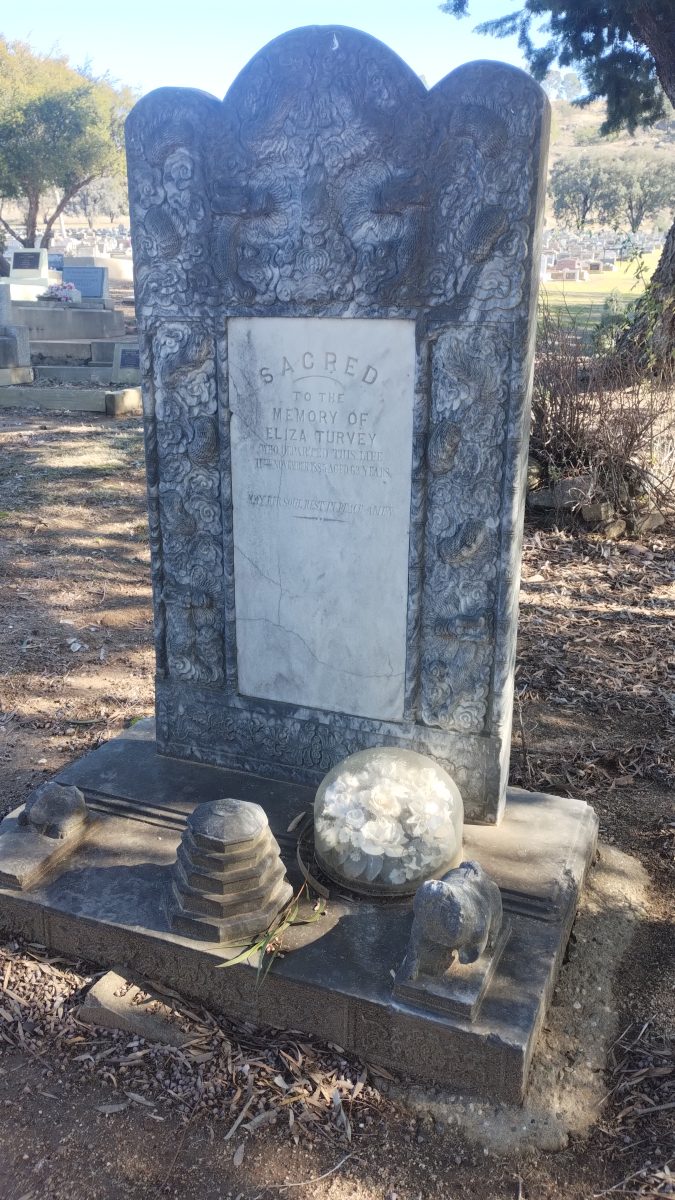
The Turvey’s Chinese-style headstone was relocated to Wagga Monumental Cemetery. Photo: Supplied.
Family dramas aside, Thomas Turvey flourished in Wagga and had premises in Murray, Johnson and Trail streets and managed the Bridge Hotel on Fitzmaurice Street near where he resided.
How he acquired his lands and wealth is not apparent, although farming, running a licensed inn and managing an opium supply business would have contributed.
He was renowned for riding from his residence to his farm each morning on a large chestnut roan horse followed by his working dogs and pet sheep.
He flourished a stock whip threatening anyone who impeded him or trespassed on his land.
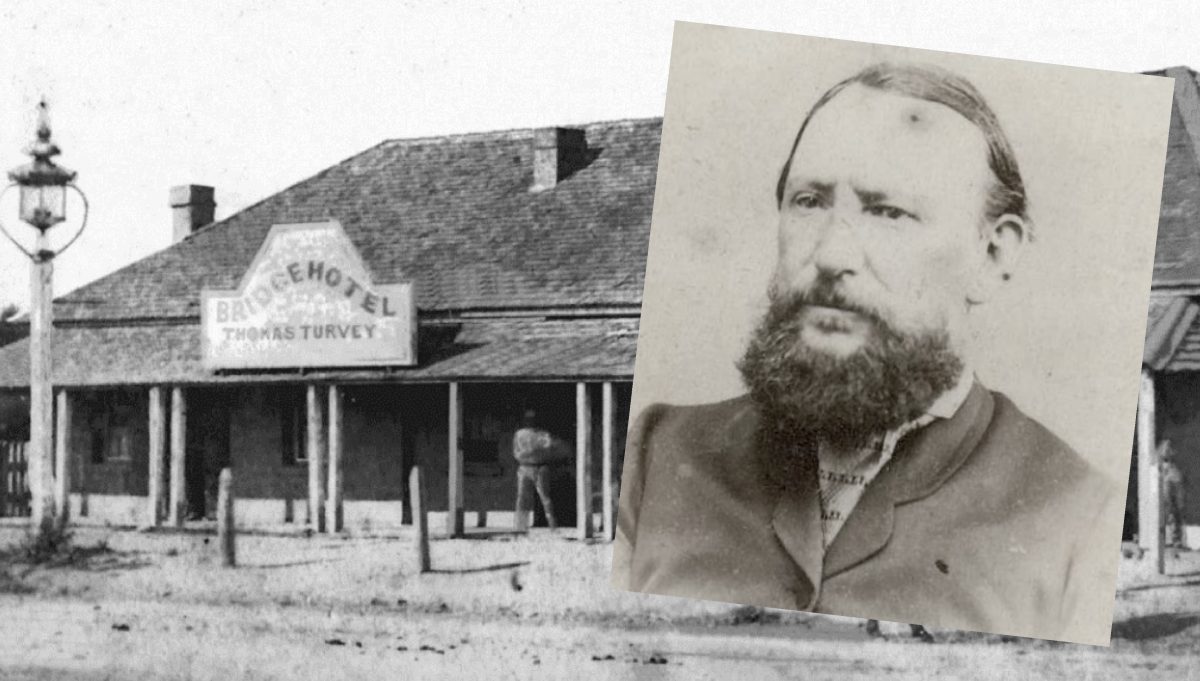
Thomas Turvey and the Bridge Hotel on the corner of Fitzmaurice and Crampton streets. Photo: WWDHS.
Thomas Turvey died after a fall from his cart on 14 January 1889 and he left his fortune to his nephew, George Turvey, which suggests he had no surviving offspring.
George seems to have been satisfied with his legacy and there is no record he looked for the rumoured buried fortune. He failed to spend any of his inheritance on adding his uncle’s name and dates to the headstone which simply reads: Sacred to the memory of Eliza Turvey who departed this life 11th November 1885 aged 65 years.
Its Oriental-style carved decoration and the inclusion of a pagoda-shaped ornament and two guardian lions (now reduced to their base fragments only) at its foot continue to puzzle researchers.
While Thomas Turvey had strong Chinese business connections there is no clear link to indicate the distinctive cultural aesthetic.
Perhaps the design merely reflects the stonemason’s taste and skill and was the best money could buy, befitting the status of the Turveys in Wagga.
As for the hidden fortune – the mystery remains.








